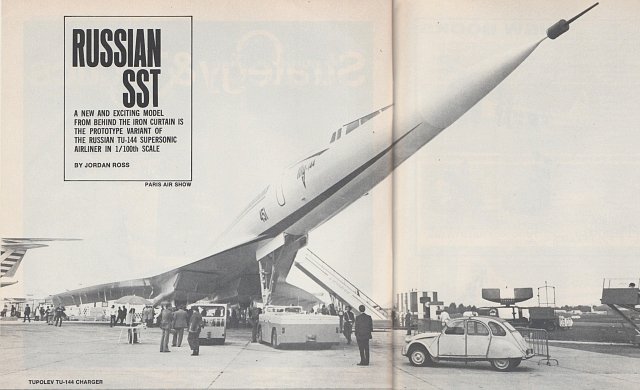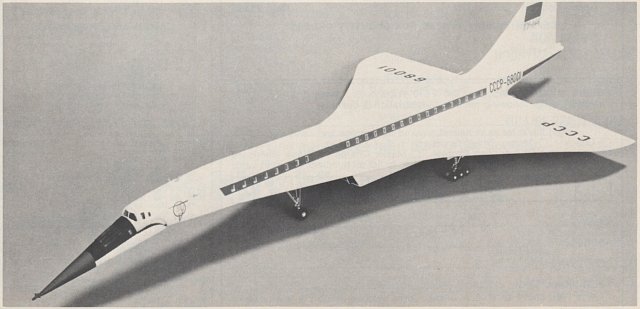| This model represents the prototype of the TU-144 which is quite
similar to the one that crashed at
the Paris Air Show recently. The
kit is manufactured by Modellbaukasten of Czecheslovakia. The model
is molded in white plastic and all
parts are cleanly molded. |
| |
| The kit features over 54 parts and
the fuselage measures almost 24
inches in length. The landing gear
and other miscellaneous parts are
molded in silver and the wheels are
in black styrene. |
| |
| An interesting Feature of the model
is the multi-part landing gear assembly. The aircraft features no less
than 26 wheels, and since each wheel
has to be cleaned and painted one
at a time, part of the building time
is devoted to the landing gear. For
those who like wheels, this is
your model. |
|
|
| The instruction sheet is well illustrated wich drawings of all the parts.
The text is multilingual, including
instructions in English. All parts are
individually numbered, allowing for
easy identification. |
| |
| The Tupolev TU-144 has been
given the NATO name (“Charger”).
It was known as early as 1965 that
the Soviet Union was going to enter
into the SST Race. A model of the
TU-144 was shown at the Paris Air
Show in 1965. The model showed
many similar lines that were to be
found on the Concorde SST. |
| |
| The first test flight of the prototype of which this model kit represents occurred in December 1968, |
|










![]()